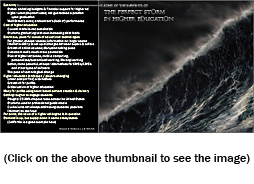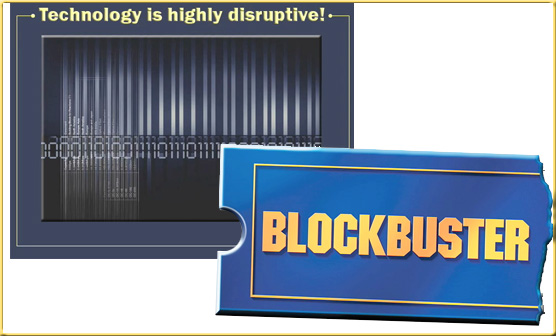The world changed, colleges missed it — from edreformer.com by Tom Vander Ark
A bunch of colleges are going out of business, only they don’t know it. They pretend that trimming costs and jacking tuition is a solution. They haven’t come to terms with a world where anyone can learn anything almost anywhere for free or cheap. Art Levine, Woodrow Wilson National Fellowship Foundation, sees three major change forces: new competition, a convergence of knowledge producers, and changing demographics.
…
To Art’s list of three big change forces, add shrinking government support, the press for more accountability, and emerging technology…the next few decades will be marked by a lumpy move to competency-based learning…instant information and the ability to learn anything anywhere.
…
The shift to personal digital learning is on. Some colleges get that. Others will seek bailouts until they go out of business. Working adults are getting smart on their own terms.
.
From DSC:
Time will tell if Tom’s assertions are too harsh here, but personally, I think he’s right.
I have it that:
- There is a bubble in higher ed
- There also exists a perfect storm that’s been forming for years within higher ed and the waves are cresting
.
- Institutions of higher education need to check themselves before they become the next Blockbuster
.
- We must not discount the disruptive powers of technology nor the trends taking place today (for a list of some of these trends, see the work of Gary Marx, as well as Yankelovish’s (2005) Ferment and Change: Higher Education in 2015)
- Innovation is not an option for those who want to survive and thrive in the future.
Specifically, I have it that we should be experimenting with:
- Significantly lowering the price of getting an education (by 50%+)
- Providing greater access (worldwide)
- Offering content in as many different ways as we can afford to produce
- Seeking to provide interactive, multimedia-based content that is created by teams of specialists — for anytime, anywhere, on any-device type of learning (24x7x365) — at any pace!
- “Breaking down the walls” of the physical classroom
- Pooling resources and creating consortiums
- Reflecting on what it will mean if online-based exchanges are setup to help folks develop competencies
- Working to change our cultures to be more willing to innovate and change
- Thinking about how to become more nimble as organizations
- Turning more control over to individual learner and having them create the content
- Creating and implementing more cross-disciplinary assignments
.
.








